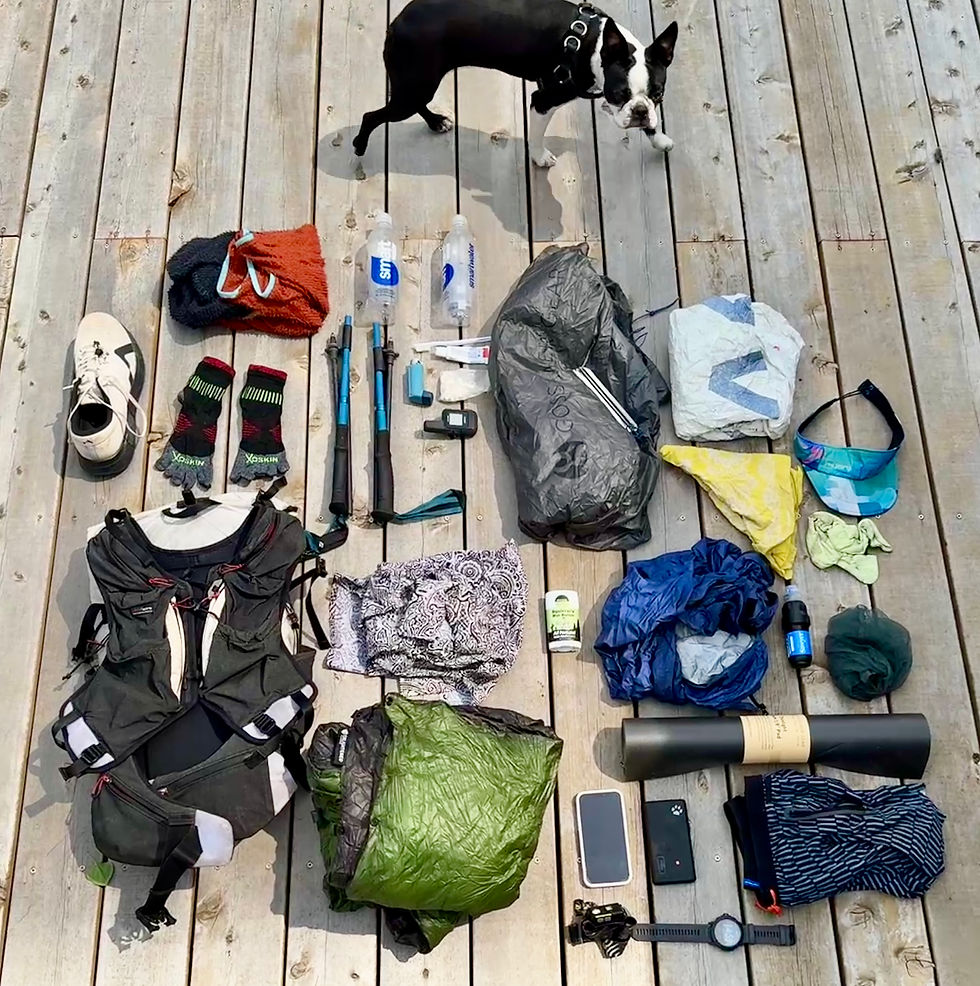How to Plan a Thru-Hike
- Free Outside
- Jan 11, 2023
- 3 min read
Updated: Dec 22, 2023
Thru-hikes vary widely in terrain, distance, and access. Each hike is different, and each hiker is unique, but some factors in the planning process remain the same. Correctly planning a thru-hike can be simplified down to a few simple categories.
Depending on the hike, some of the categories may require only a few minutes of planning. On other hikes, however, the entire endeavor may depend entirely on one category. No matter the project, here is a simple way to define the preparation process before hitting the trail on a thru-hike.

How to plan a thru-hike
Thru-Hiking Gear: Tailoring Your Equipment for Trail Success
Gear is a critical factor in thru-hiking, adapting to diverse terrains and conditions. During a recent 40-mile trek through snow-covered ridgetops, I recognized the stark contrast in gear needs from a prior desert hike in Arizona. Altitude changes not only the weather but also the terrain.
Navigating a ridge without a defined trail, we relied on pre-mapped water sources and GPS tracks, emphasizing the need to preserve phone battery. Layering up was essential against relentless winds. Planning gear involves considering extremes—sunny ridgelines to exposed snowscapes. Adaptable gear ensures comfort across varying conditions.
One challenge in packing for an entire trail is resupplying. Optimal strategies allow gear adjustments based on changing conditions and seasons throughout the hike.
Resupplying on a Thru-Hike: Strategic Decisions for Sustenance
Deciding how to handle resupplying is a crucial aspect of thru-hiking. In my unsupported 485-mile journey on the Colorado Trail, I carried all needed food—a drastic approach.
For longer hikes, planning resupply locations at towns or accessible roads is practical. Choosing between mailing packages and buying from local stores depends on location offerings. I adjust based on appetite, mailing packages for remote spots and buying food locally elsewhere.
Effective planning limits carrying 5-6 days of food per section, emphasizing the importance of mapping and planning food resupply.
In conclusion, thru-hiking gear and resupplying demand thoughtful consideration and planning. Adaptability is key to ensure comfort and sustenance throughout the trail, enhancing the overall thru-hiking experience.
Finances on a thru-hike, how to pay for a thru-hike
Planning the monetary side of a thru-hike is specific to each individual. On my first hike of the Pacific Crest Trail in 2011, I was hypersensitive about each expenditure. Now I plan to be frugal and cut out most things like hotel rooms, but there is a little more leeway to enjoy the occasional beer.
The best way to estimate finances is find a trip report or blog of a previous hiker and either reach out to them directly, or see if they post about their budget. This will serve as a guideline when forecasting how much the hike will cost.
A safe bet is to have about $1.50 per mile in the bank account to help pay for town amenities and resupply. This doesn’t factor in bills you might still be paying from the home front.
Permits and Restrictions
Permits and restrictions are another factor that may involve nothing more than a simple Google search. There have been no permits required on about half of my 15 thru-hikes. But on trails like the Pacific Crest Trail, the permit will dictate the start date, plan, schedule, and the feasibility of the entire hike.
Beyond permits, consider the restrictions and advice surrounding different places. In Colorado there was a fire ban when I hiked the Colorado Trail. I didn’t plan to have a fire, but if I had wanted to, it would have been illegal. Another factor in restrictions in preparing for bears, mice, and wildlife.
Bear cans are required in much of the Sierra Nevada mountains, and bear hangs are required in Glacier National Park. Along with these concrete restrictions, come the added weight of things like bear spray.
How to Schedule your thru-hike
The schedule of a thru-hike depends largely on the four other factors listed above. The seasonality of the hike is dependent on gear, finances, permits, and the resupply potential along the way.
Schedules can include things like pushing back a thru-hike a few days to avoid a winter storm, or adjusting your route around wildfires. The schedule is a personal creation specific to each hike.
I start with a spreadsheet, then input every possible resupply location and corresponding mileage. From there I can test different start date possibilities, calculate an estimated end date, and be prepared to start my thru-hike!




Comments